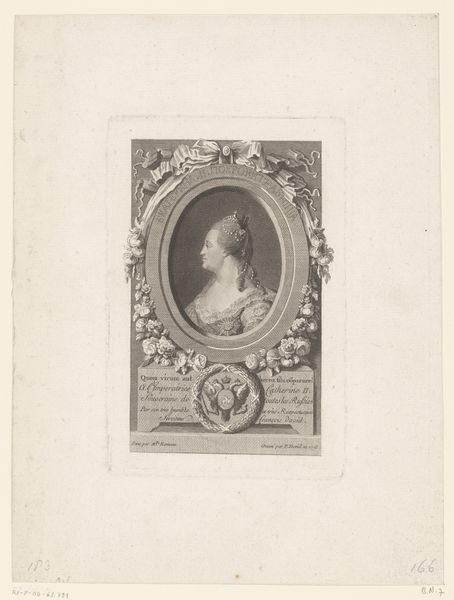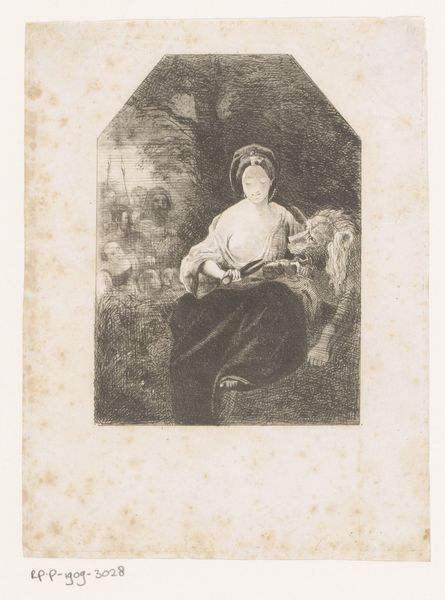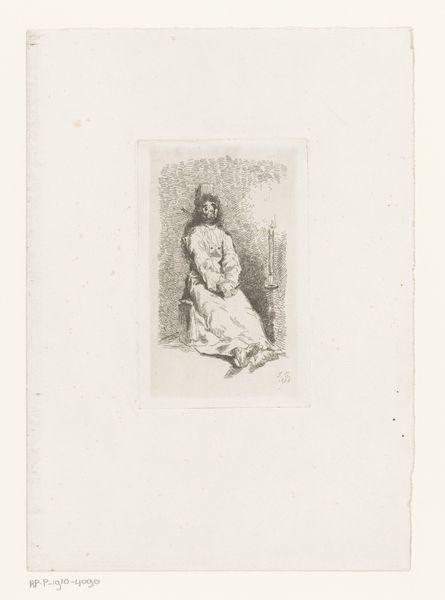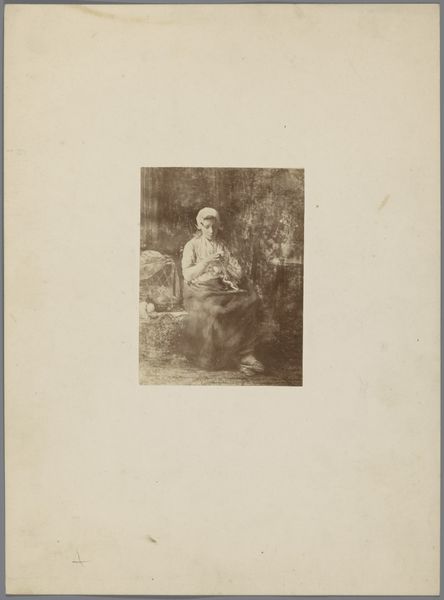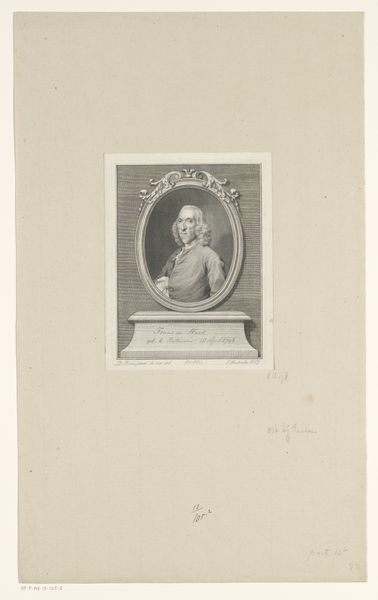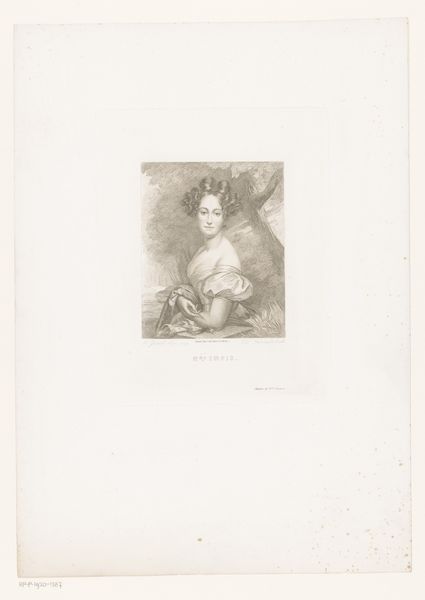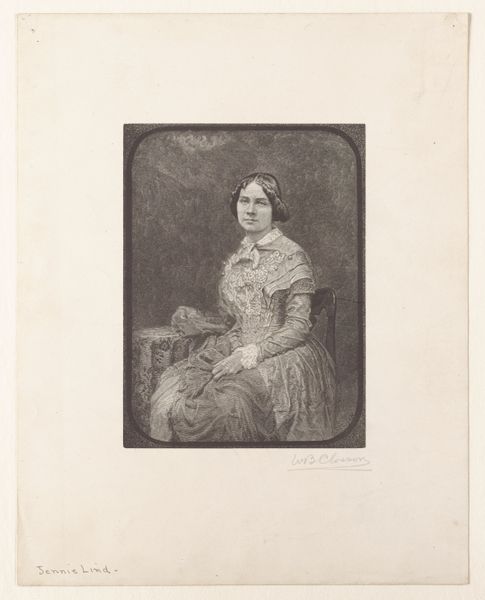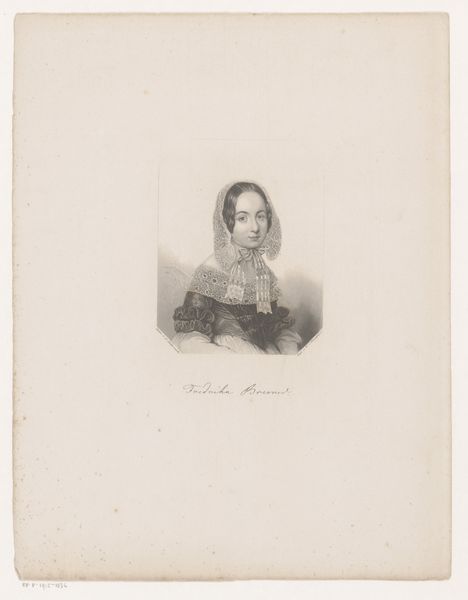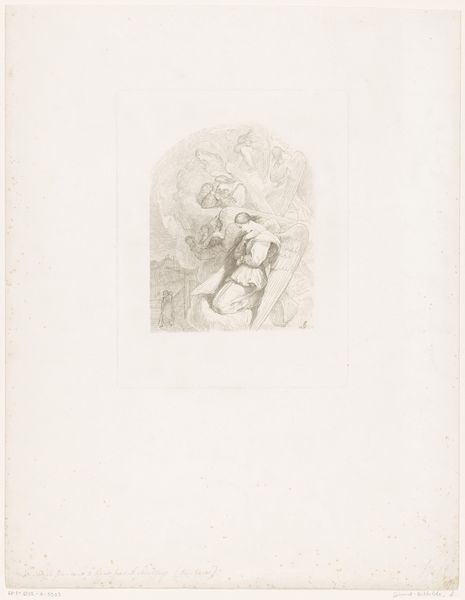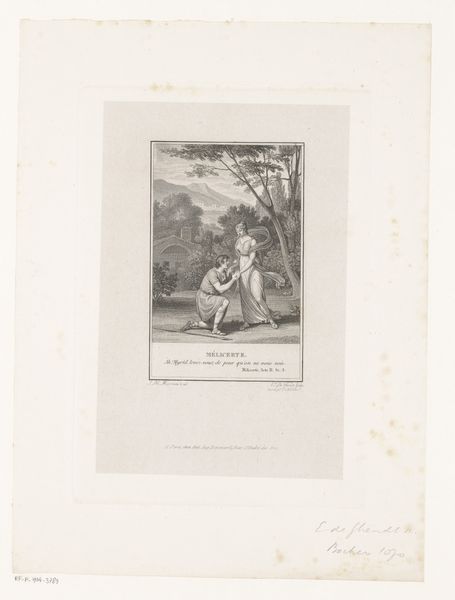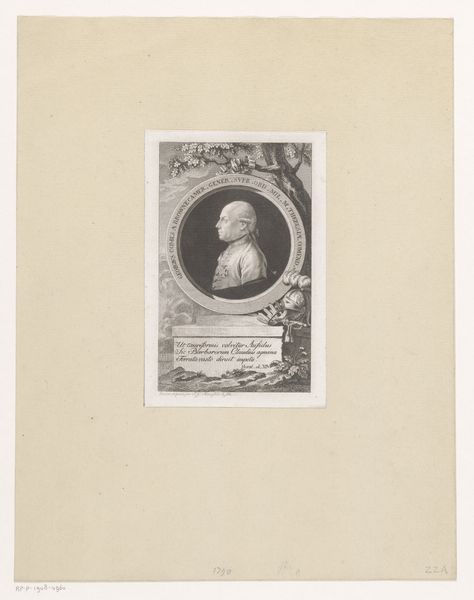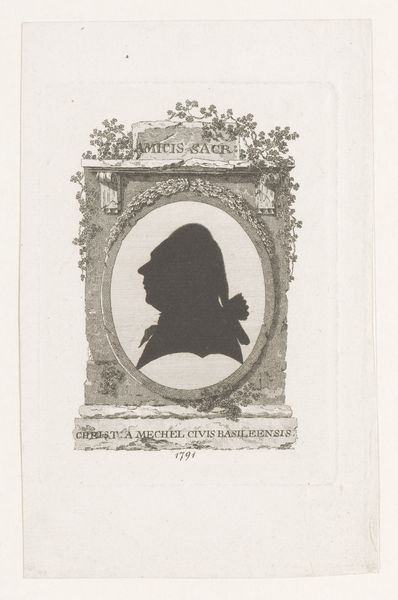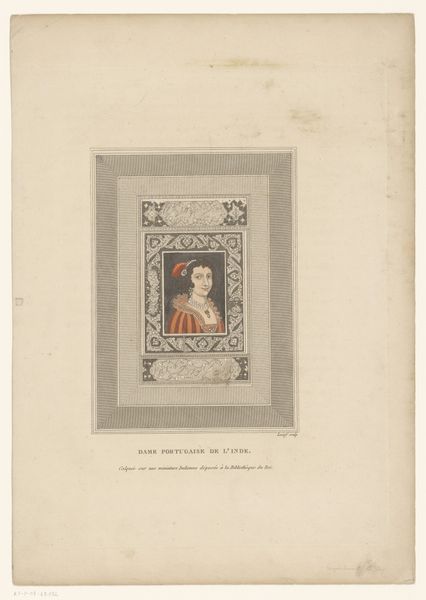
Portretbuste van Salomon Gessner, geplaatst op een steen in een landschap 1786
0:00
0:00
print, engraving
#
portrait
#
neoclacissism
# print
#
landscape
#
engraving
Dimensions: height 268 mm, width 202 mm
Copyright: Rijks Museum: Open Domain
François Robert Ingouf created this print, "Portrait bust of Salomon Gessner, placed on a stone in a landscape," using etching. The bust itself, draped in classical garb, sits atop a stone pedestal, an emblem of permanence and veneration amid the natural world. Consider the symbolism of the stone. In ancient Greece, Hermes, the god of boundaries and transitions, was often represented by a simple stone pile. This evolved into the "herm," a stone pillar with a head, marking sacred places. Here, Gessner's bust atop the stone transforms him into a cultural landmark, anchoring his legacy in the landscape. The surrounding foliage, a common motif, echoes the "locus amoenus," an idyllic, secluded place. The untamed, flourishing vegetation contrasts with the structured bust, mirroring humanity's relationship with nature—a dialogue between order and wilderness. This dialectic persists through art history, resurfacing in various forms, each bearing the imprint of its time. The romantic era’s fascination with ruins overtaken by nature. A subconscious recognition of art and history, a cycle of creation, decay, and renewal.
Comments
No comments
Be the first to comment and join the conversation on the ultimate creative platform.
